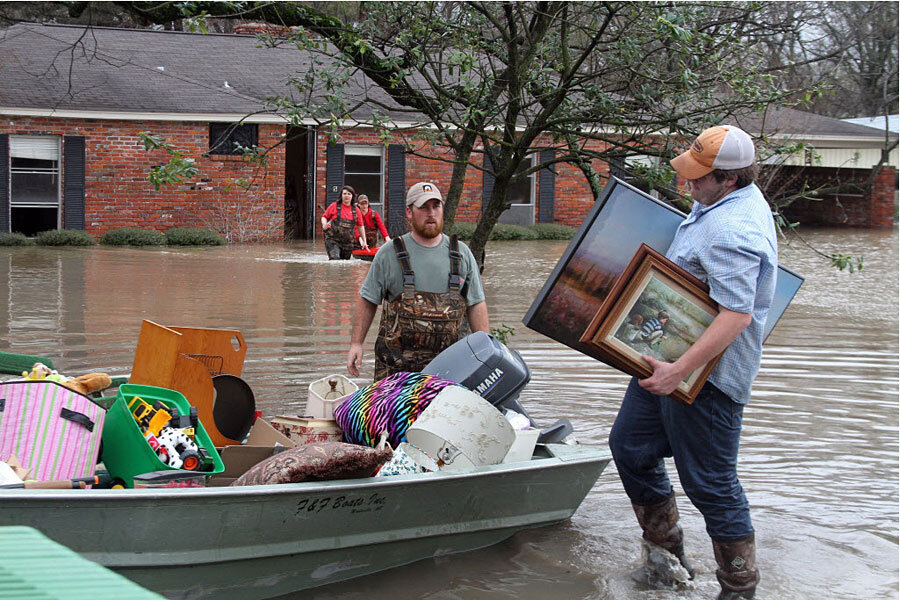Mississippi and Louisiana warily eye rising Pearl River
Loading...
Louisiana and Mississippi emergency officials nervously eye the rising Pearl River which runs along the border of the two states, as more rain is predicted for later this week.
Flooding began last week and has already damaged thousands of homes across the region and claimed at least four lives in Louisiana. In Mississippi, the hunt continued Sunday for two missing fishermen. And this isn't the first time the Pearl River has surged over its banks.
The National Weather Service predicts the river could reach 21 feet late Monday, which would bring it to the same level as the 1983 flood that expanded the Pearl River over a mile beyond its banks. In 1979 the Pearl River set records, rising to over 43 feet and flooding downtown Jackson, Miss. That flood caused some $500 to $700 million worth of damages, which would be equivalent to $1 billion today.
President Obama officially declared the flooding in Louisiana a major disaster on Sunday, an action that initiates federal aid to those affected.
But Louisiana Lt. Gov. Billy Nungesser told The Associated Press he was concerned that some people didn't have flood insurance. "A lot of these people I spoke to did not have flood insurance because they had never flooded before," he said.
Dramatic flooding events like the devastating surge seen in 1979 are often referred to as "100-year floods," events that are just 1 percent likely to occur in a given year. But the risk of such major natural disasters are predicted to increase with the changing climate.
Increased global temperatures means increased climate variability, according to the Intergovernmental Panel on Climate Change. Climate models predict more precipitation as the climate warms which will in turn increase the risk of flash flooding and urban flooding. Furthermore, the warmer weather means precipitation is more likely to come in the form of rain than snow.
The IPCC reports that some regions could see what was considered a 100-year flood as frequently as every 2 to 5 years.
This report contains material from The Associated Press.






